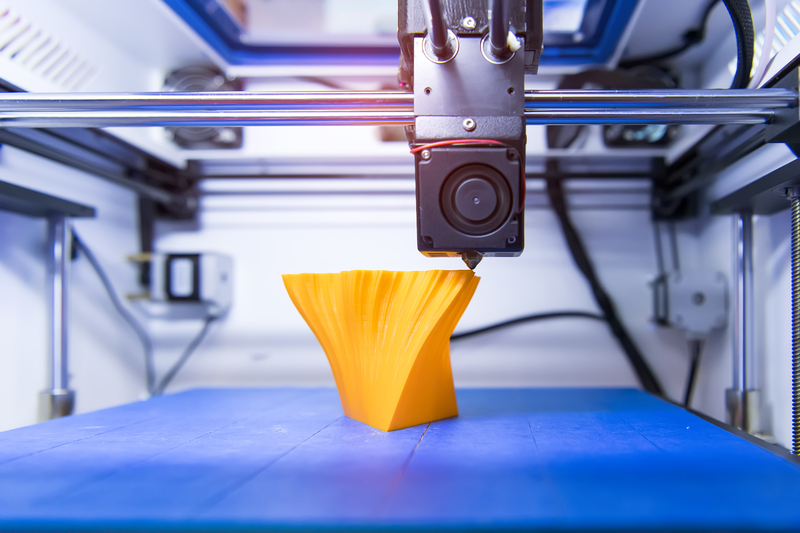This article is your complete guide to answering the question of how much electricity a 3D printer will use. On average, a desktop 3D printer typically consumes between 50 to 300 watts of power per hour during operation. Knowing your printer’s energy consumption not only helps determine cost savings but also contributes to environmental responsibility. Below, we explore the details of a 3D printer’s energy usage, associated costs, and strategies for enhancing energy efficiency. Our goal is to provide you with all the necessary information to make an informed decision.
Here at The Energy Professor, we want to give you the information you need to not only save money on your energy bill but to also become more energy efficient. We hope you find this post helpful! And makes it easier for you to know more about 3D printer power consumption. Be sure also to check out our one-of-a-kind energy savings calculator!
The Energy Professor Electricity Rate Check Tool
How Much Electricity Does a 3D Printer Use?

At-home 3D printers, particularly larger models, can consume up to 300 watts per hour! These printers gained popularity for their ability to create three-dimensional objects from materials like plastic or metal. The energy-intensive process of heating materials to a melting point to form objects requires substantial power! So it’s no wonder that those who own 3D printers wonder what the printer’s wattage is. But wattage can vary based on the printer type, object size and complexity, material used, and chosen print settings.
How Many Watts Does a 3D Printer Use?
- 50 – 300 watts per hour
A typical desktop 3D printer uses between 50 to 300 watts of power per hour, while larger industrial models may exceed 1,000 watts per hour. For instance, a desktop 3D printer with a 150-watt power consumption, if operated for 4 hours daily over a 5-day week, would use 2,400 watt-hours (or 2.4 kWh) weekly. This usage translates to about 9.6 kWh monthly and approximately 115.2 kWh annually, offering a practical perspective on the energy demands of 3D printing technology.
Related Post: What Uses the Most Electricity in a Home?
What Would a 3D Printer Electricity Cost?

When it comes to 3D printing energy costs, they are typically minimal and usually not a major factor in choosing a printer. Assuming an average electricity rate of $0.12 per kWh, the yearly energy cost for using a 3D printer, based on the earlier example, would be around $13.82 (115.2 kWh x $0.12/kWh). This cost might vary with different local energy rates. For a 10-hour print job, the cost is remarkably low, roughly 9 cents. While these are general estimates, and actual usage and costs can differ significantly based on various factors, it’s evident that 3D printers, especially with frequent or prolonged use, do contribute to electricity expenses, albeit modestly.
How Much Power Does a 3D Printer Use?
The typical power consumption of a desktop 3D printer ranges from 50 to 300 watts per hour when in use. While larger industrial 3D printers often have a higher energy demand. These models can see a potent energy use exceeding 1,000 watts per hour. It’s important to be aware of a 3D printer’s power usage for effective energy cost management and to enhance energy efficiency during the printing process. Keep in mind that energy consumption can vary significantly among different printer models.
Popular 3D Printer’s Power Consumption
Ender 3 power consumption – 125 Watts, or 0.125kWh
Ender 3 PRO power consumption – 360 Watts
Flashforge Adventurer 3 power consumption – 150 Watts
We own the Ender 3 and noticed that the Ender 3 power draw is a lot lower than expected and does not add much to our monthly electricity bill.
Related Post: How to Calculate Electricity Bill
3D Printing Electricity Cost Savings Tips

To optimize the energy usage of your 3D printer and minimize energy costs, here are some tips:
- Choose an energy-efficient 3D printer: Look for printers that are certified by organizations such as ENERGY STAR, which indicates that they meet strict energy efficiency standards.
- Optimize print settings: Adjust print settings such as layer thickness, print speed, and temperature to minimize energy usage while still achieving desired print quality.
- Limit idle time: Turn off the printer when not in use, as some printers may continue to consume energy even when idle.
- Use energy-saving features: Some 3D printers come with energy-saving features such as sleep mode or auto-shutdown, which can help reduce energy consumption during periods of inactivity.
- Choose eco-friendly materials: Consider using eco-friendly materials that require lower printing temperatures, as this can help reduce energy consumption.
If you are wondering what exactly is using the most power while using a 3D printer it is because the lower the layer thickness of the material, the longer a print will take therefore leading to a higher power consumption overall. If you can speed up your prints you’ll be using less power overall.
Related Post: How Many Watts Does a TV Use?
3D Printer Electricity Usage FAQ

Q: How much power does a 3D printer use?
A: Typical 3D printers consume minimal electricity, averaging between 50 to 150 Watts during the printing process, which is equivalent to the energy used by just one or two incandescent light bulbs.
Do you Need Cheaper Electricity?
If you’ve taken the time to understand the information on your bill and discovered you’re paying more than you’d like for your electricity, have you looked around for a cheaper deal? The Energy Professor has a wealth of information on saving on your utilities, including details of top deals that could significantly reduce your monthly or quarterly electricity bills.
We hope you found this article helpful! If you are looking for ways to increase energy efficiency and sustainability in your home be sure to look at the latest renewable energy options in your area. The Energy Professor helps residential and small business owners find qualified energy suppliers in New York, New Jersey, Pennsylvania, Texas, Ohio, Maryland, Illinois, and Massachusetts


